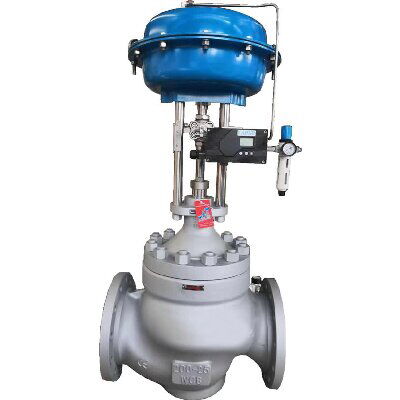What's Unique about Cage-Guided Double-Seated Control Valves
On this page
Cage-guided double-seated control valves are a key control equipment widely used in the industrial field, becoming the preferred type of valve in many industrial processes due to their excellent regulation performance and stable fluid control capabilities. With its unique double-seated structure design, the control valve can maintain high-precision flow regulation and rapid response speed under complex working conditions, meeting the needs of various industrial applications.
The core design of the cage-guided double-seated control valve lies in its double-seated structure. The valve consists of two valve seats, upper and lower, with the valve core located in between and connected to the valve stem. The valve core is designed with two sealing surfaces that mate with the upper and lower valve seats, forming a dual-seal structure. As the valve core moves up and down between the valve seats, the opening of the fluid passage changes accordingly, thereby achieving precise control of fluid flow and pressure.
The advantage of this structure is that the double-seat design can significantly reduce the friction between the valve core and the seats, thereby improving the valve's sensitivity and stability. At the same time, the balanced characteristics of the double-seat structure can effectively reduce the impact of fluid shock on the valve core, ensuring that the valve remains stable under high differential pressure conditions.
Cage-guided double-seated control valves have been widely used in the industrial field due to their unique design and excellent performance. They not only excel in regulation precision and response speed but also become a key component in many industrial processes through their durability and ease of maintenance. The following will explore the main features and advantages of this type of valve in more detail, to further understand its outstanding performance in practical applications.
The double-seat structure of the valve core makes the cage-guided double-seated control valve exhibit higher regulation precision in the fluid control process. Compared with single-seat control valves, the double-seat design can better balance fluid pressure, reduce the impact of fluid on the valve core, and thus improve the stability and accuracy of regulation.
Thanks to the flexible design of the double-seat structure, the valve core can quickly respond to changes in flow, especially suitable for applications that require rapid flow regulation.
The valve core and seats are made of wear-resistant materials, which not only extends the service life of the equipment but also reduces maintenance frequency and costs, ensuring that the valve can operate stably in harsh environments for a long time.
The design of the cage-guided double-seated control valve allows it to handle high-flow conditions and still exhibit excellent fluid control capabilities under high differential pressure conditions, making it particularly suitable for applications in the oil, chemical, natural gas, and other industries.
The valve core and seats can be replaced individually, making the maintenance process more convenient and faster, reducing downtime. In addition, the balanced structure design of the valve core makes it suitable for handling media with high pressure differences, helping to extend the overall service life of the equipment.
Cage-guided double-seated control valves can be compatible with a variety of actuator options, such as direct-acting electric actuators, forming electric cage-guided double-seated control valves to meet different automation control needs and further enhance the level of system automation.
Due to their unique design and excellent performance, cage-guided double-seated control valves are widely used in various industrial fields. Especially in situations that require high-precision flow control and rapid response, such as the chemical, oil, natural gas, power, and paper industries, cage-guided double-seated control valves can provide reliable solutions. Their adaptability to high flow and excellent control capabilities under high differential pressure conditions have been widely recognized in these fields.
To ensure the long-term efficient operation of cage-guided double-seated control valves, regular maintenance and care are essential. Here are some key maintenance suggestions.
External cleaning: Regularly clean the exterior of the valve to remove dust and dirt to prevent corrosion or other potential damage caused by external contamination.
Sealing parts inspection: Regularly check the condition of the packing gland and other sealing parts to ensure good sealing performance. If there is wear or aging, replace the relevant parts in time to avoid leakage problems.
Lubrication: Regularly lubricate parts that require lubrication with the appropriate lubricating oil to reduce wear and ensure smooth operation of the valve.
System cleaning and maintenance: If the valve relies on a pneumatic or hydraulic system for operation, regularly clean the filters of these systems to ensure there are no impurities inside the system, maintain the purity of the fluid, and thus ensure the normal operation of the valve.
With its double-seat structure design, excellent regulation performance, and adaptability to various working conditions, the cage-guided double-seated control valve occupies an important position in the fields of industrial automation and fluid control. Its durability, reliability, and easy maintenance make it an indispensable equipment in various industrial applications. Whether in complex process flows or harsh working environments, the cage-guided double-seated control valve can provide excellent performance, safeguarding the efficient operation of industrial processes.

